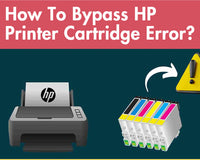How do thermal printers work when using them to print? The good news is that you've found the right blog that offers things you need to learn about. In this True Image blog, we'll show you how thermal printers work when they are used for printing.
Index
- How Do Thermal Printers Work?
- The Benefits Of Thermal Label Printers
- Applications Of Thermal Printers
- Thermal Label Printers VS Inkjet Or Laser Printers
How Do Thermal Printers Work?
Thermal printers are a type of printer that uses heat to produce images or text on special paper called thermal paper. Thermal printers, also known as thermal transfer or direct thermal printers, operate by utilizing heat to produce images and text on a variety of media. Their working mechanism can be broadly categorized into two main types: direct thermal printing and thermal transfer printing. Here's a detailed breakdown of how these printers function:
💙Direct Thermal Printing
- Heat Application: In direct thermal printing, a thermal print head is used to apply heat directly to a special type of paper known as thermal paper. This paper contains a heat-sensitive layer that reacts to heat by changing color.
- Image Formation: As the print head moves across the paper, it selectively applies heat to the paper's surface. Wherever heat is applied, the heat-sensitive layer darkens, forming the desired image or text.
- No Ink Required: Unlike inkjet or laser printers, direct thermal printers do not require ink cartridges or toner. This eliminates the need for ink replacement and reduces maintenance costs.
- Fast and Quiet: Direct thermal printers can print quickly, often reaching speeds of tens of lines per second or higher. They also operate with minimal noise, making them suitable for use in quiet environments.

💙Thermal Transfer Printing
- Ribbon and Media Interaction: In thermal transfer printing, a ribbon coated with ink or dye is used in conjunction with a thermal print head. The print head applies heat to the ribbon, causing the ink or dye to melt and transfer onto the printing media (such as labels, tags, or synthetic papers).
- Controlled Heat Application: The print head precisely controls the amount and location of heat applied to the ribbon, ensuring that only the desired image or text is transferred onto the media.
- Durability and Quality: Thermal transfer printing produces high-quality, durable images and text that can withstand harsh environments and various conditions. Thermal printers are ideal for applications where long-lasting labels or tags are required.
- Media Versatility: Thermal transfer printers can accommodate a wide range of printing media, including but not limited to thermal labels, synthetic papers, and even some types of fabrics.
| 🌸 Related Blogs: What Is An Inkless Printer? How Does It Work? |
In summary, thermal printers work by applying heat to either thermal paper (in direct thermal printing) or an ink-coated ribbon (in thermal transfer printing). This heat-induced process creates images and text on the chosen media without the need for ink cartridges or toner. The speed, quiet operation, low maintenance costs, and versatility of thermal printers make them popular in various industries, including logistics, retail, healthcare, and more.
The Benefits Of Thermal Label Printers
😀High Printing Speed: Thermal label printers operate without a warm-up period, enabling fast printing speeds that can reach tens of lines per second or more. This is ideal for applications requiring rapid printing of large volumes of labels.
🤩Low Noise Level: Compared to traditional inkjet or laser printers, thermal label printers operate with minimal noise, making them suitable for environments where quietness is essential.
😍Clear and Sharp Prints: Thermal printing technology produces clear and durable images and text with resolutions that can meet various printing requirements, ensuring readability and professional-looking labels.
😀Ease of Use: Thermal label printers are straightforward to operate, requiring minimal setup and configuration. Insert the thermal label roll and power on the printer to start printing.
🤩Energy Efficiency and Environmental Friendliness: These printers consume less energy and do not require ink cartridges or toner, reducing waste and environmental impact.
|
🌸Recommended Blogs: What Is An Edible Ink Printer? How Does It Work?
|
😍Low Maintenance Costs: Maintenance costs are minimal as thermal printers do not rely on expensive consumables like ink or toner. Regular cleaning of the print head is usually sufficient to maintain print quality.
😀Portability: Thermal label printers are often designed to be compact and lightweight, making them easy to transport and ideal for mobile printing applications.
🤩Versatility in Print Media: In addition to standard thermal paper, these printers can accommodate various types of thermal labels and films, catering to diverse industry needs.
😍Durability of Prints: When stored appropriately (e.g., away from direct sunlight and moisture), thermal prints can retain their clarity and color for extended periods.
😃Wide Range of Applications: Thermal label printers are widely used across industries such as retail, logistics, warehousing, and healthcare for printing price tags, product labels, shipping labels, and more.
These advantages make thermal label printers a popular choice for businesses and organizations seeking efficient, cost-effective, and high-quality labeling solutions.
Applications Of Thermal Printers
Thermal printers, also known as thermal label printers, have numerous applications across various industries. Their versatility, speed, and low maintenance costs make them a popular choice for many businesses. Below are some of the key applications of thermal printers:
1. Retail Industry
Price Tagging: Retailers use thermal printers to print price tags for products, ensuring that pricing information is up-to-date and accurate.
Barcode and QR Code Printing: Thermal printers generate barcodes and QR codes for easy product identification and inventory management.
Receipt Printing: In stores, thermal printers are commonly used to print customer receipts quickly and efficiently.
2. Logistics and Warehousing
Shipping Labels: Thermal printers print shipping labels for packages, including tracking numbers and delivery information, facilitating efficient package handling and tracking.
Inventory Management: They assist in inventory control by printing labels for products stored in warehouses, enabling easy identification and location.

3. Healthcare
Patient Identification: Hospitals and clinics use thermal printers to print patient wristbands with critical information such as name, room number, and allergies.
Medication Labeling: Pharmacies rely on thermal printers to print medication labels, ensuring accurate drug administration and patient safety.
Specimen Labeling: In laboratories, thermal printers create labels for biological samples, facilitating sample tracking and analysis.
4. Hospitality
Room Keys and Boarding Passes: Hotels and airlines use thermal printers to print room keys and boarding passes, providing convenience to guests and passengers.
Menu Printing: Restaurants may utilize thermal printers for printing customized menus or daily specials.
| 🌸Related Blogs: How to Change Printer Settings to Labels? |
5. Food and Beverage
Ingredient and Nutritional Labels: Food manufacturers and retailers use thermal printers to print ingredient lists, nutritional information, and expiration dates on packaging.
Kitchen Orders: Restaurants employ thermal printers in the kitchen to print orders from the front of the house, streamlining the order fulfillment process.
6. Manufacturing
Product Labeling: Manufacturers use thermal printers to print labels for products, including serial numbers, part numbers, and warnings.
Work-in-Progress Tracking: They assist in tracking work-in-progress materials, ensuring efficient production flow.
7. Ticketing and Event Management
Event Tickets: Ticketing companies and event organizers use thermal printers to print admission tickets, wristbands, and passes for concerts, sporting events, and other gatherings.
8. Other Applications
File Management: Offices and libraries may use thermal printers for filing labels and indexing purposes.
Law Enforcement and Government: Agencies may employ thermal printers for printing citations, parking tickets, and other official documents.
In summary, thermal printers are indispensable tools in numerous industries due to their speed, reliability, and versatility. They enable businesses to streamline operations, improve efficiency, and enhance customer satisfaction.
Thermal Label Printers VS Inkjet Or Laser Printers

The Differences Among Thermal Label Printers, Inkjet Printers And Laser Printers
|
As for shipping label printing, you can print shipping labels with not only a thermal label printer but also an Inkjet or Laser printer. For reliable ink and toner cartridge replacements, visit True Image and buy compatible HP/Brother/Canon ink and toner cartridges with confidence.
















